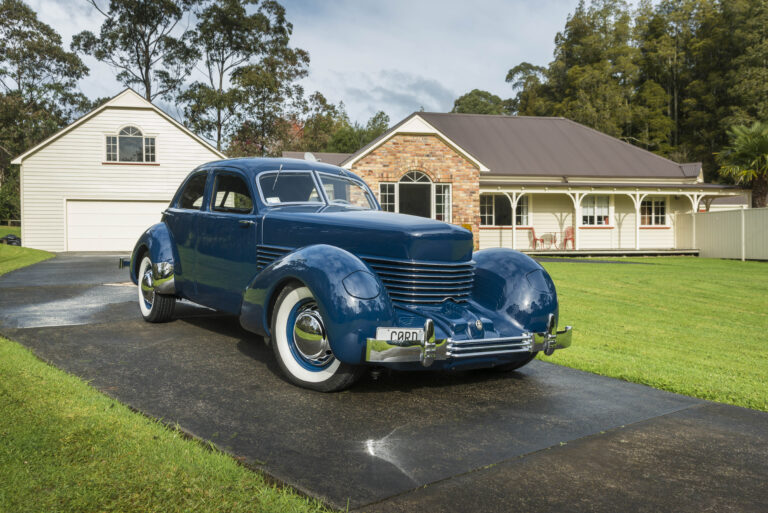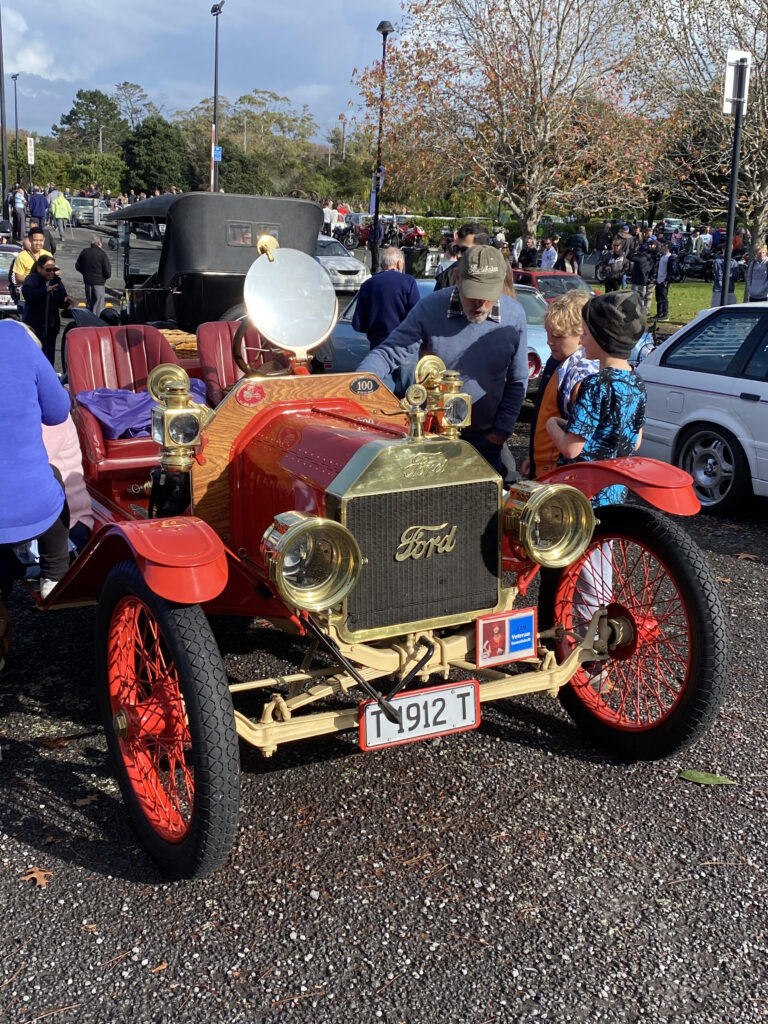Wow! Not one but two historic, ex-German DRM Ford racing cars in the pits at the Bruce McLaren race circuit at Taupo, waiting to do demonstration runs …
By Bob Hulme
Photography Strong Style Photo
The Würth connection
The writer, Bob Hulme, was the founding managing director of Würth New Zealand. He was with the company from 1987 to 1998. On one of his visits to Germany in the 1990s, he visited the Sinsheim Museum, where he saw a Zakspeed Capri displayed in Würth sponsorship that was purported to be the Klaus Ludwig 1981 championship-winning car — perhaps the same car featured here.
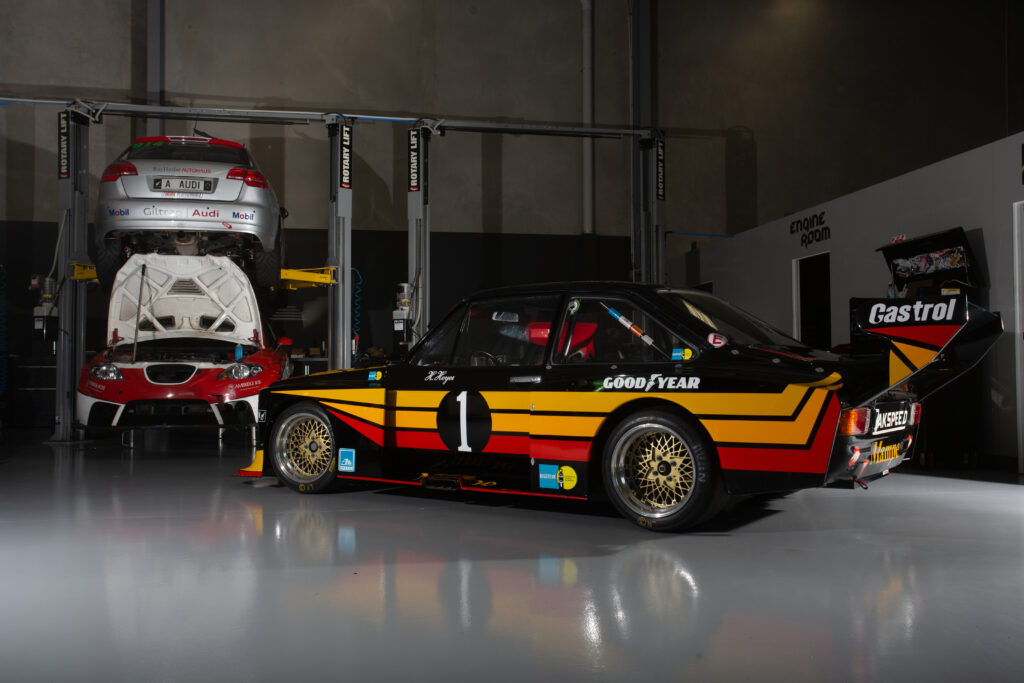
It was at the Historic Grand Prix meeting organised by the HRC in January 2021. The focus make for the meeting was Ford, so it was no surprise to see a huge range of Ford cars everywhere, but to see these two ex-DRM cars here — the Deutsche Rennsport Meisterschaft is the German sports/touring car championship — was an eye-opener.
Turns out that the Escort was brought to New Zealand by Kiwi Gary Wilkinson, who discovered it in a very sorry state in Malaysia while he was working over there. He could see it had a lot of genuine Zakspeed equipment on it so was sure it was a special car. Research of the chassis number — ZAK-E23/75 — identified it as the car in which Hans Heyer won the DRM championship in 1975. Gary shipped the car home to New Zealand and gave it a thorough restoration over a seven-year period, painting it in the livery it wore when it won the championship. This car was also driven by Klaus Ludwig — runner-up in 1976 — and Armin Hahne during its racing life.
Zakspeed regularly sent cars to compete at Kyalami in South Africa and to Macau. This particular Escort was sold in Macau to a prominent Ford dealer in Malaysia, and was raced in local events there.
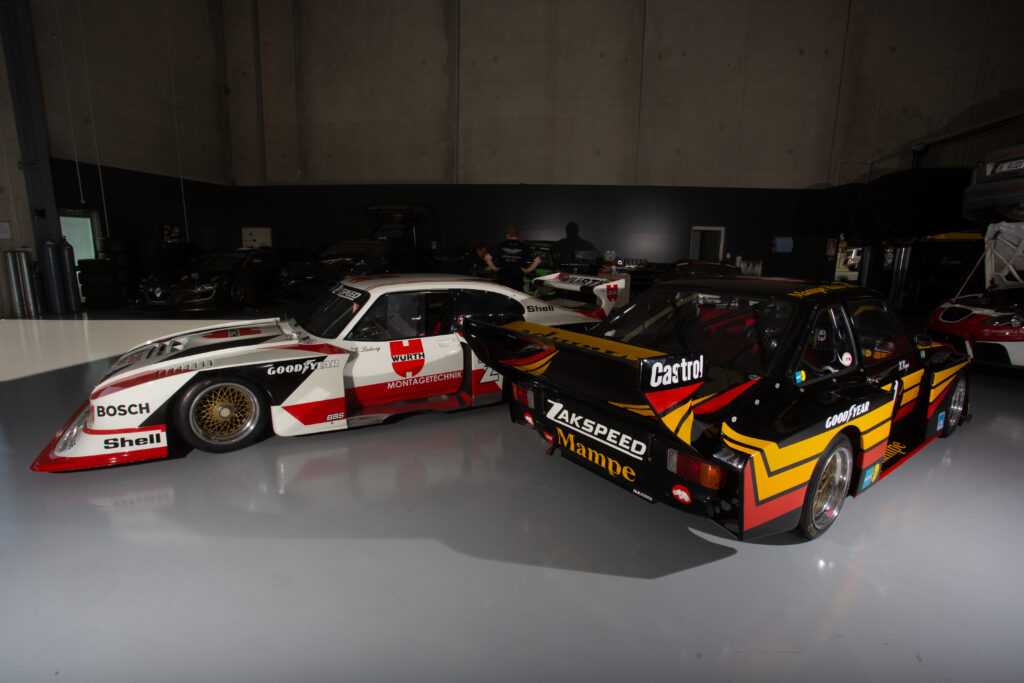
Persuasion
It was certainly great to see these ex-DRM cars blasting around the track doing demonstration laps. They are now both under the same ownership. Shane Helms somehow persuaded both Gary Wilkinson to part with his pride and joy and Zakspeed to let him buy the Zakspeed Capri. A big cheque can be pretty persuasive but Shane had to convince Zakspeed that he would be a worthy custodian of the car before it would consider talking about price.
Obviously, Shane can be very persuasive but it still took him two years to convince Gary Wilkinson to sell him the Escort after he saw it in action at Hampton Downs. Persistence clearly paid off.
Both cars are stars of Shane’s collection, which is looked after by his team at Racelab, Auckland, which specialises in race car preparation and support.
The Escort was originally built to Group 2 regulations but was upgraded when Group 5 cars were allowed to compete in the DRM. Group 5 specs allowed much more highly modified cars. These so-called ‘silhouette’ cars only had to follow the outer shape of a mass-produced car from the wheel arches up. The suspension layout had to be retained and the engine taken from a production unit of that car’s manufacturer but that was about it as far as restrictions went. So, they were essentially a handmade race car with bodywork that made them look, if you squinted into the sun, something like a mass-produced car.
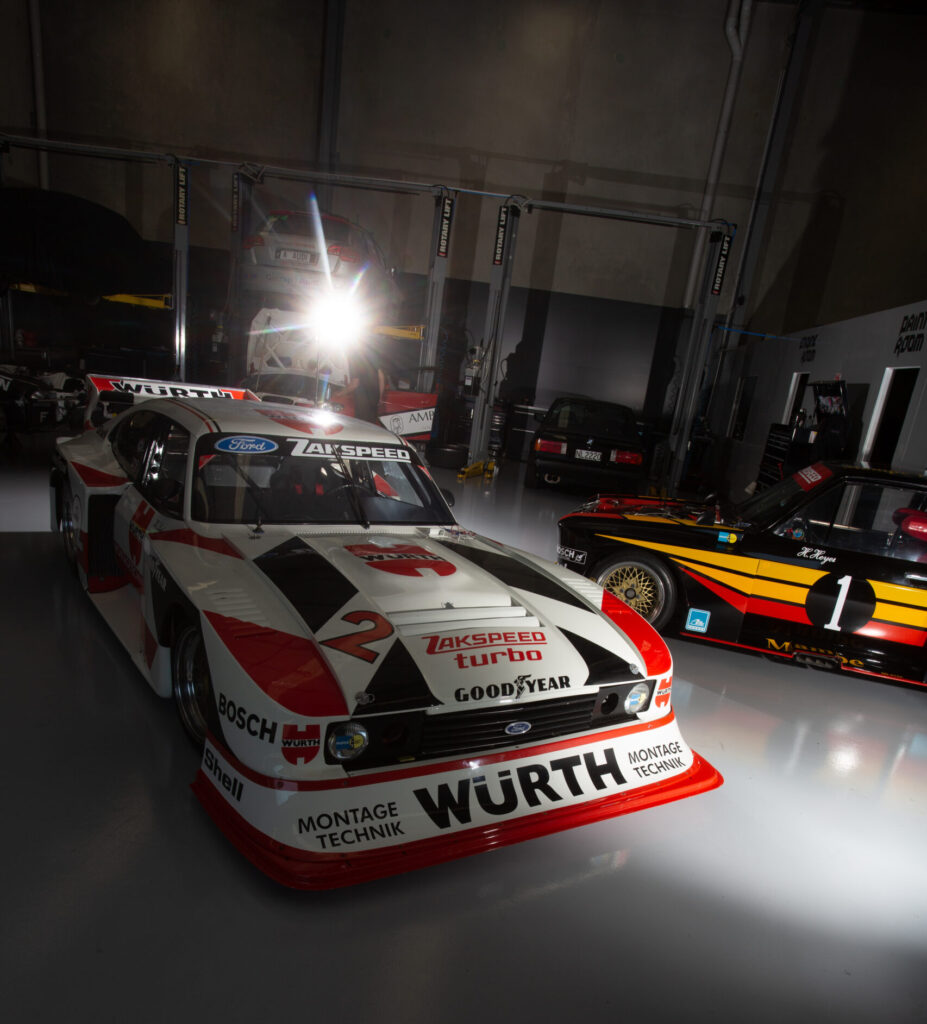
Thoroughly Zakspeed
That’s what the Zakspeed Capri is, for sure. Close inspection shows a space-frame chassis made from aluminium to keep weight as low as possible. The engine has an aluminium block as well as head. These major components were made specifically by Zakspeed. I guess it’s the old question of how much has to be original. If the specs say “based on a mass-produced engine”, then perhaps you could get away with using a production sump pan only. There are stories aplenty of people ‘restoring’ historic cars and keeping perhaps just a suspension upright original.
The underside of the Capri was well ahead of its time, with an F1-style tunnel shape to create downforce and flexible side skirts to maintain it. This is a really serious race car, built to take on the Porsche 935s that were dominant at the time. The Capri had a turbocharged 1.7-litre — or 1.4-litre — four-cylinder engine putting out around 600hp, whereas the Porsches had a 3.1-litre flat six twin turbo engine producing close to 800hp. So, power to weight ratio and aerodynamics were important factors for the Capri to win races. The aluminium space-frame chassis weighs just 75kg, including the roll cage. Overall, the Capri weighs just 790kg compared to the Porsche’s 970kg.
Not everything about the car was ahead of its time, though; you won’t find a programmable ECU under the bonnet — or any sort of ECU, for that matter. It has mechanical fuel injection and distributor ignition. Even so, both the Escort and the Capri happily rev to 9000rpm. The engine is based on the Ford Kent engine, which had its origins back in the 1960s.
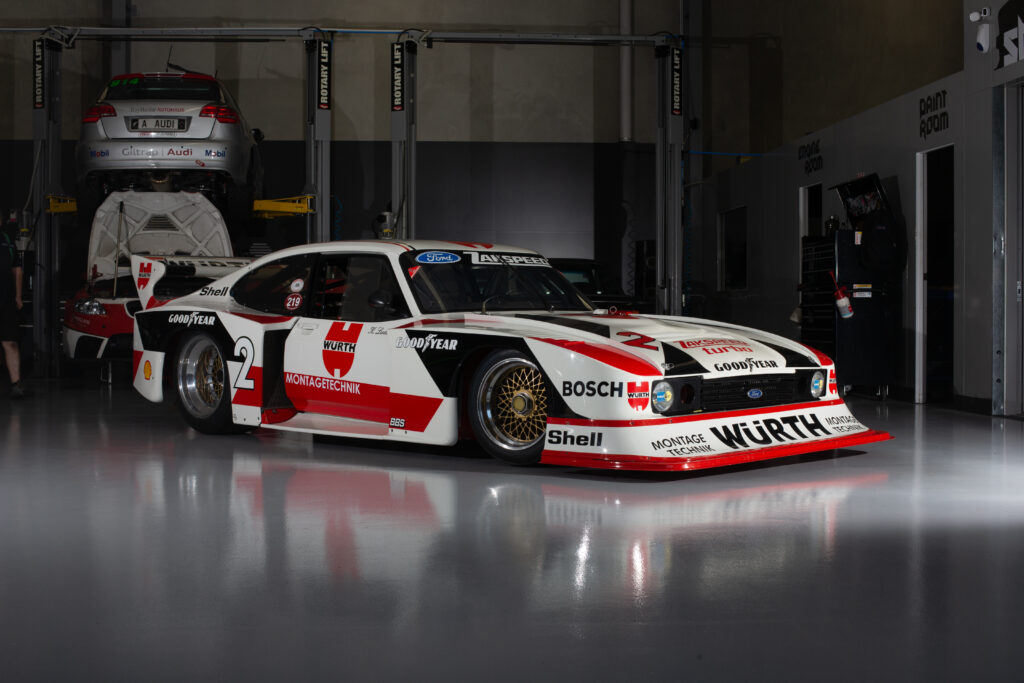
Provenance
If you have watched any of the TV programmes on antiques you will be familiar with how important is the provenance or history of a collectible item. To be able to demonstrate that a particular item is genuine adds credibility and, of course, value. The Capri was sold to Shane by Zakspeed as the actual car that won the DRM championship in the hands of Klaus Ludwig in 1981. However, I am told that its engine is a 1700cc capacity whereas the engine in that winning DRM car was 1427cc. In 1981, a near-identical Zakspeed Capri was raced by Manfred Winkelhock and it had the 1700cc engine. This does raise the question: which car is it? The Klaus Ludwig car was sponsored by Würth and the Manfred Winkelhock car by Liqui Moly — ironically, Liqui Moly has since been bought out by Würth.
In 1981 the DRM series was run with two divisions that were basically engine-size categories. Division 1 allowed normally aspirated engines over 2 litres and turbocharged engines up to 1.7 litres. Under division 2, normally aspirated engines had to be under 2 litres and turbocharged engines were a maximum of 1.4 litres. In each race, the winners of divisions 1 and 2 were awarded the same points. There was no reward for an outright race win. This meant that the season champion could come from either division. Zakspeed elected to field a car in each division. In the end, the division 1 car had won six races while the division 2 car won 11 of the 13 races, giving the title to Ludwig.
The car featured here is believed to be the one driven at the 2012 Goodwood Festival of Speed by Klaus Ludwig after its extensive restoration by Zakspeed. Whichever car it is, it is certainly a significant historic example of German saloon car racing and of a particularly successful period for Zakspeed.
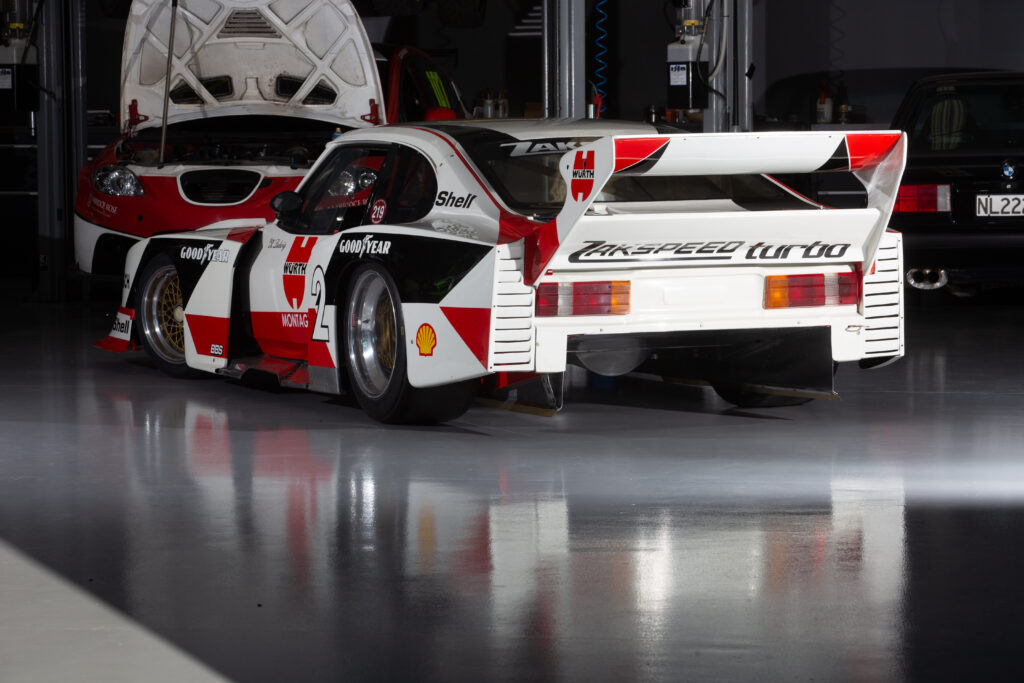
Zakspeed
Erich Zakowski started Zakspeed in 1968. It is now run by his son, Peter, who has a taste for racing himself. In fact, he has won the Nürburgring 24 Hours several times. Local knowledge could be a factor, as the company is based in the German town of Niederzissen, a mere 25km from the Nürburgring.
While Zakspeed was involved in building cars for the DRM series from the late 1970s, as the official Ford team, it was the 1981 championship victory that was the high point for the team.
The Zakspeed Capri model was used as the basis for a foray into the American IMSA Camel series for Ford USA’s special vehicle operations dressed as a Mustang.
From 1985 to 1988 Zakspeed even had a go at F1. This must have been a huge learning curve, and certainly an expensive one. The team’s best result was fifth place at the 1987 San Marino Grand Prix with Martin Brundle driving. Christian Danner also drove for Zakspeed in F1. After pulling the pin on F1 involvement, the team ran cars in the DTM — Mercedes 190Es and Opel Calibras in the 1990s.

Klaus Ludwig
Ludwig was born on 5 October 1949.
He won the DRM Championship in 1979 driving a Porsche 935, and won again in 1981 driving a Zakspeed Capri. In 1988, he won the DTM Championship driving a Ford Sierra. The following year, Ludwig left Ford and signed with Mercedes-AMG. He also won Le Mans in 1979, 1984, and 1985.
Klaus Ludwig won the Wellington 500 Street race in 1987, driving a Ford Sierra RS500 for the Ford/Texaco team. He shared the drive with Klaus Niedzwiedz. That year, the race was round 10 of the World Touring Car Championship.
The DRM (Deutsche Rennsport Meisterschaft) was the forerunner of the DTM (Deutsche Tourenwagen Meisterschaft).
According to DTM.com, Ludwig is rated second in the list of the top ten best DTM drivers.
1 Bernd Schneider Germany
2 Klaus Ludwig Germany
3 Mattias Ekström Sweden
4 Gary Paffett Great Britain
5 Kurt Thiim Denmark
6 Nicola Larini Italy
7 Jamie Green Great Britain
8 René Rast Germany
9 Bruno Spengler Canada
10 Marco Wittmann Germany

